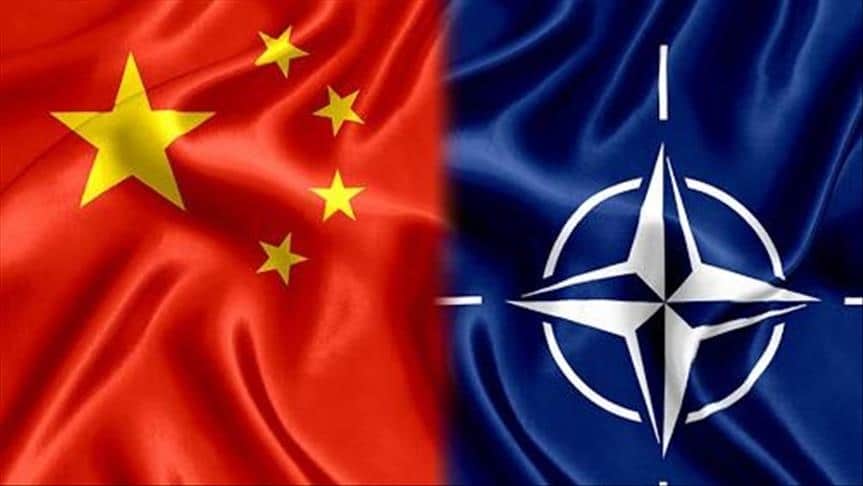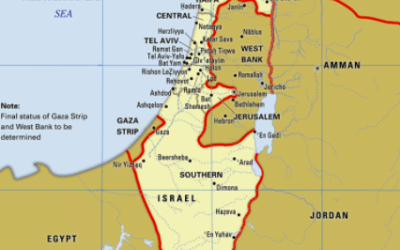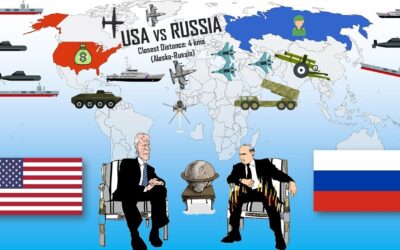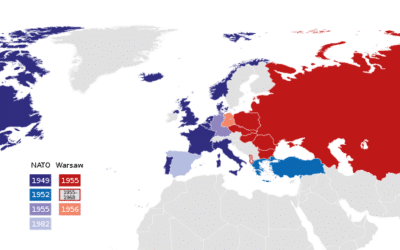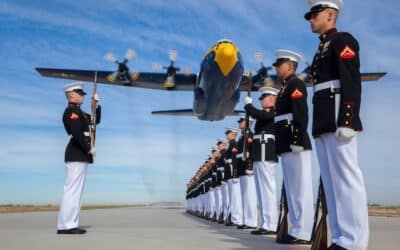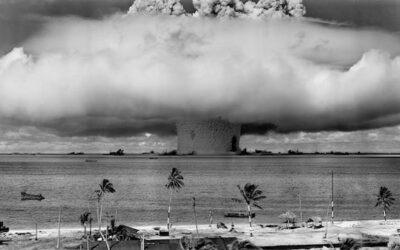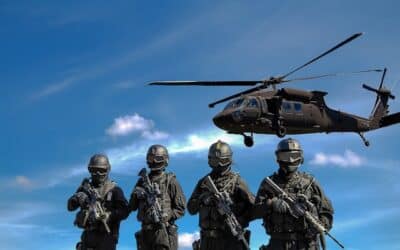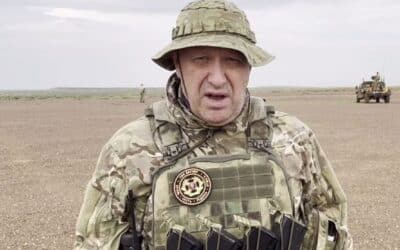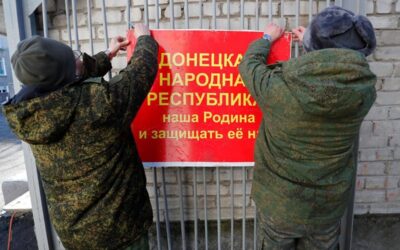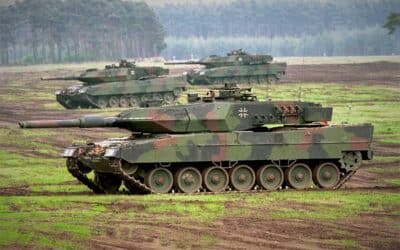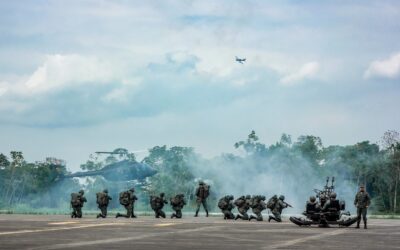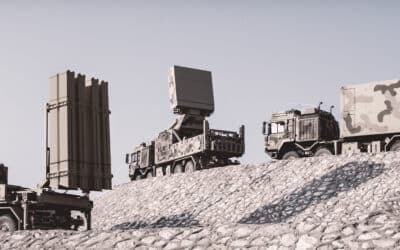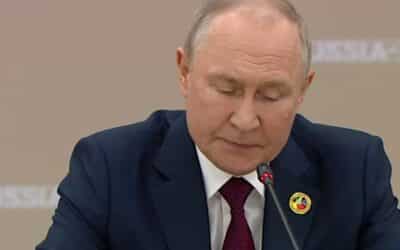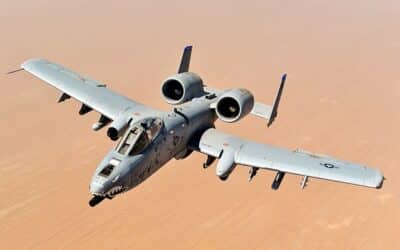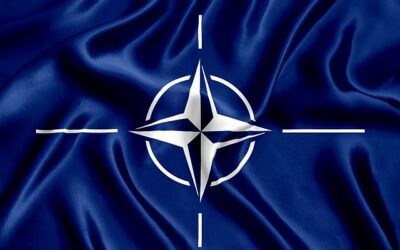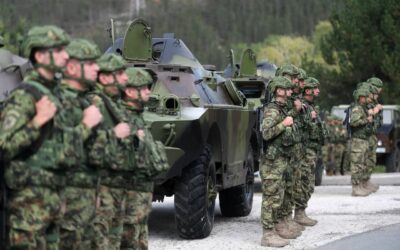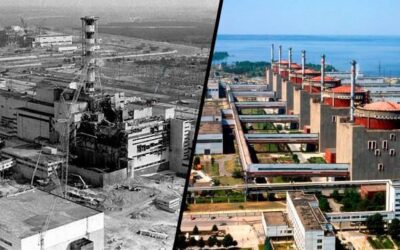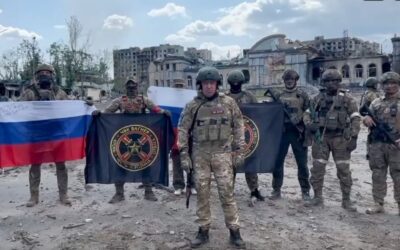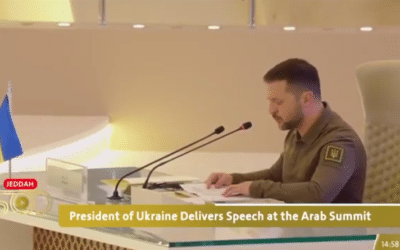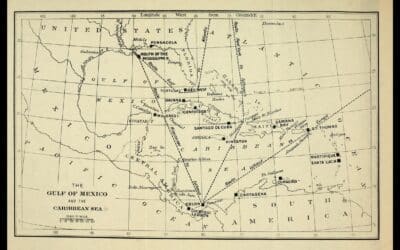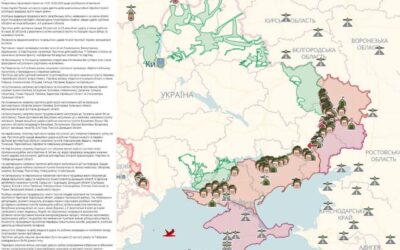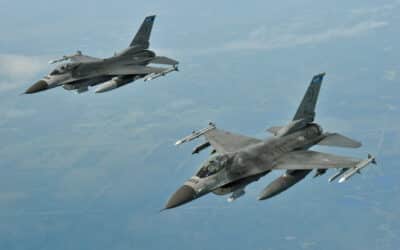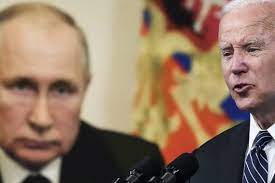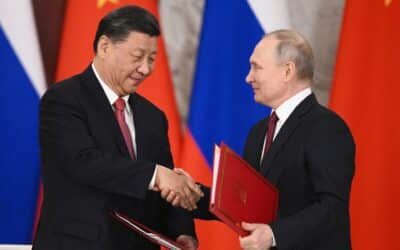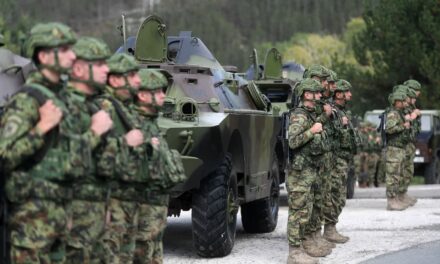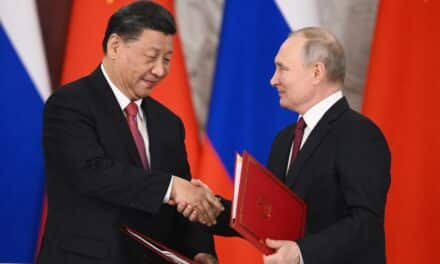In the realm of global military dynamics, the potential clash between NATO and China is a topic of growing concern. As tensions rise and geopolitical strategies evolve, the question arises: Who would emerge victorious in a hypothetical war between NATO and China? It is an inquiry that demands careful analysis and an exploration of their respective strengths and capabilities. In this blog post, we will delve into the key factors that could influence the outcome, examining military prowess, technological advancements, and geopolitical alliances. By examining these aspects, we aim to shed light on the potential outcome of such a conflict and the implications it would have on the world stage.
Overview of NATO
NATO, an abbreviation for the North Atlantic Treaty Organization, is an intergovernmental military alliance established in 1949 with the goal of safeguarding the collective security and defense of its member countries. This section provides an overview of NATO, including its definition, purpose, member countries, and military strength.
Definition and Purpose of NATO
NATO is a political and military alliance that consists of 30 member countries from North America and Europe. Its primary purpose is to promote peace and stability through collective defense, deterrence, and cooperation. The core principle of NATO is the concept of collective defense, wherein an attack on one member country is considered an attack on all, and it mandates a collective response.
The organization’s formation was prompted by the need to counter the growing influence and military capabilities of the Soviet Union during the Cold War. Today, NATO continues to evolve its role as a proactive defense alliance, responding to emerging security challenges and maintaining a cooperative framework for its members.
Member Countries
NATO has a diverse membership that includes countries from North America and Europe. As of 2021, there are 30 member countries, each bringing unique capabilities and contributions to the alliance. Some key member countries of NATO include:
- United States: As the largest contributor to NATO both financially and militarily, the United States plays a crucial role in the alliance. Its military strength, advanced technologies, and strategic capabilities significantly contribute to NATO’s overall deterrence and defense posture.
- Germany: Germany, located at the heart of Europe, is an economic powerhouse and a vital member of NATO. It hosts numerous NATO bases, provides significant military resources, and actively participates in NATO operations and missions.
- United Kingdom: With a long-standing history of global military engagement, the United Kingdom’s military assets and expertise contribute significantly to NATO’s capabilities. Its advanced defense industry and operational experience make it a key contributor to the alliance.
Military Strength
NATO member countries collectively possess substantial military strength, comprising significant manpower, advanced weaponry, and cutting-edge technologies. The alliance’s military strength stems from the combined capabilities and contributions of its member countries.
NATO’s collective defense strategy ensures that member countries are adequately equipped and prepared to deter potential adversaries. This includes maintaining a robust military presence, conducting joint military exercises, and investing in defense capabilities to address evolving security challenges.
By leveraging the collective military power and cooperation among member countries, NATO aims to establish a strong deterrent force and maintain peace and stability in the Euro-Atlantic region.
In conclusion, NATO is an intergovernmental military alliance with a primary objective of promoting collective defense, deterrence, and cooperation among its member countries. Through its diverse membership and collective military strength, NATO plays a critical role in maintaining peace and security in the Euro-Atlantic region.
Overview of China
China, a country with deep historical roots and a rich cultural heritage, has emerged as a global powerhouse in recent decades. From economic prowess to military strength, China has become a major player on the world stage. In this section, we will delve into the military capabilities and strengths of China.
Military Strength and Capabilities of China
- Size and Numbers: China boasts the largest military in the world in terms of active personnel. With an estimated 2.18 million troops, their sheer size provides them with a significant advantage in terms of manpower. This large force enables China to project power and maintain a strong presence both regionally and globally.
- Advanced Technology: China has made substantial investments in military modernization, particularly in areas such as cyber warfare, space technology, and advanced weaponry. They have made significant progress in developing advanced fighter jets, stealth submarines, and ballistic missiles, showcasing their commitment to enhancing their military capabilities.
- Land Forces: China maintains a robust ground force, equipped with tanks, artillery, and armored vehicles. Their ground forces are highly trained and possess the ability to mobilize rapidly, enabling them to respond effectively to various scenarios.
- Naval Forces: China has been steadily expanding its naval capabilities, with a focus on enhancing its blue-water naval capabilities. They have developed an aircraft carrier program and continue to invest in building a modern fleet. Their naval forces provide them with the ability to project power beyond their borders and protect their maritime interests.
- Air Force: The Chinese Air Force has undergone significant modernization efforts, with a focus on developing advanced aircraft and enhancing its aerial capabilities. China has successfully developed stealth fighter jets and long-range bombers, demonstrating their commitment to building a formidable air force.
- Missile Systems: China has invested heavily in developing a wide range of missile systems, including ballistic missiles, cruise missiles, and anti-ship missiles. These missile systems provide China with the ability to strike targets both within the region and beyond, enhancing their offensive capabilities.
- Cyber Warfare: China has developed sophisticated cyber warfare capabilities, allowing them to conduct offensive operations in the cyber domain. This enables them to target critical infrastructure, disrupt communications, and gather intelligence, further enhancing their overall military strength.
In conclusion, China’s military strength and capabilities have seen significant advancements in recent years. With a combination of numerical superiority, advanced technology, and a focus on modernization, China has transformed its military into a force to be reckoned with. As they continue to invest in their military capabilities, it is clear that China is positioning itself as a formidable player on the global stage.
Factors Influencing the Outcome of a Potential War
In analyzing the possible outcome of a potential war between NATO and China, several key factors come into play. These factors can greatly influence the course of the conflict, shaping the dynamics and ultimately determining the winner. Geographical factors, technological advancements, and nuclear capabilities all play a significant role in assessing the potential outcome of such a conflict.
Geographical Factors
Geography has long been recognized as a crucial factor in warfare. In the case of a conflict between NATO and China, both sides possess unique geographical advantages and challenges. For NATO, its alliance structure provides a strategic advantage, as its member countries are spread across various parts of the world. This enables NATO to draw upon a diverse range of resources and expertise.
On the other hand, China’s geographic location affords it the benefit of a vast landmass, allowing for extensive maneuverability and potential control over key supply routes. Additionally, China’s proximity to the South China Sea grants it a strategic advantage in terms of naval operations and control over critical maritime chokepoints.
Technological Advancements
Technological advancements have revolutionized modern warfare, reshaping the landscape of military capabilities. In a potential conflict, both NATO and China would rely heavily on their technological prowess to gain an upper hand.
NATO, being an alliance of technologically advanced countries, boasts cutting-edge military equipment and superior technological infrastructure. This includes advanced aircraft, sophisticated missile defense systems, and state-of-the-art communication networks. These technological advantages would enable NATO forces to project power globally and swiftly respond to changing circumstances.
China, on the other hand, has made significant strides in modernizing its military capabilities. The country has invested in advanced weapon systems, including hypersonic missiles, stealth aircraft, and artificial intelligence technologies. China’s advancements in cyber warfare and space capabilities also contribute to its overall military strength. As a result, China possesses the ability to challenge NATO in certain domains and potentially offset some of NATO’s technological advantages.
Nuclear Capabilities
Nuclear capabilities play a highly influential role in shaping the outcome of any potential war. Both NATO and China possess nuclear arsenals, which act as a deterrent against large-scale conflict.
NATO’s nuclear capabilities are primarily based on the strategic forces of the United States, the alliance’s leading military power. The U.S. maintains a formidable nuclear arsenal and has the ability to project nuclear power across the globe. This nuclear deterrent provides NATO with a significant advantage in deterring potential aggression.
China, on the other hand, has developed a limited but potent nuclear arsenal. While it does not possess the same scale as the United States or Russia, China’s nuclear capabilities are still a crucial factor to consider. These capabilities act as a deterrent against any potential military action that threatens its national sovereignty.
In conclusion, several factors come into play when assessing the potential outcome of a war between NATO and China. Geographical factors, technological advancements, and nuclear capabilities all shape the dynamics of such a conflict. While the outcome of any war is complex and uncertain, analyzing these factors provides valuable insights into the potential strengths and weaknesses of each side.
NATO’s Advantages
NATO, the North Atlantic Treaty Organization, is a powerful military alliance comprising 30 member countries. In a hypothetical conflict against China, NATO holds several advantages that contribute to its strength. This section will explore three key advantages: Collective Defense and Alliance Cooperation, Superior Military Technology, and Strong Air and Naval Power.
Collective Defense and Alliance Cooperation
NATO’s core principle is collective defense, ensuring that an attack on one member is considered an attack on all. This principle fosters a strong sense of unity and mutual support among member nations. The collective defense mechanism allows NATO to pool resources, share intelligence, and coordinate military efforts effectively.
Through alliance cooperation and joint military exercises, NATO nations have developed interoperability, enabling seamless coordination and integration of forces. This collaboration enhances overall operational effectiveness and strengthens the alliance’s capabilities in confronting potential adversaries.
Superior Military Technology
NATO boasts some of the most advanced military technologies in the world. Its member countries invest heavily in research and development, staying at the forefront of innovation. Advanced technologies such as unmanned aerial vehicles (UAVs), precision-guided weapons, and advanced surveillance systems provide NATO forces with a significant edge in modern warfare.
By leveraging cutting-edge technology, NATO can enhance situational awareness, improve targeting accuracy, and maintain operational superiority. Additionally, the alliance’s collective industrial and technological capacity allows for the rapid development and deployment of advanced defense systems, giving NATO a formidable advantage.
Strong Air and Naval Power
NATO possesses a robust air and naval power, which are crucial elements in modern warfare. The alliance’s air forces consist of a vast array of fighter jets, bombers, and reconnaissance aircraft that provide superior air supremacy and strike capabilities. This dominance in the skies enables NATO to control the airspace, neutralize enemy threats, and support ground operations effectively.
Furthermore, NATO’s naval forces include aircraft carriers, destroyers, submarines, and amphibious assault ships. This formidable naval presence allows for power projection, maritime superiority, and the ability to control key sea lanes. A strong naval presence ensures the protection of NATO’s interests, safeguards vital supply routes, and enables effective naval blockade if necessary.
In conclusion, NATO holds substantial advantages in a potential conflict with China. Its collective defense and alliance cooperation mechanisms foster unity and coordination among member nations. The alliance’s commitment to advanced military technology grants them a significant technological edge, while their robust air and naval power ensure dominance in the skies and on the seas. These advantages make NATO a formidable force ready to confront any potential threats to its member countries.
China’s Advantages
With its rapidly growing military prowess and strategic positioning, China possesses a range of advantages in a potential conflict. These advantages can greatly impact the outcome and the balance of power. Let’s explore some key factors that give China an edge over its potential adversaries.
Large Population and Reserve Forces
One of China’s greatest advantages lies in its sheer population size and the ability to mobilize a large reserve force. With a population of over 1.4 billion, China has a vast pool of manpower that can be trained and deployed in times of war. This gives them a significant advantage in terms of resources and the ability to sustain long-term combat operations.
The Chinese government has also invested heavily in its reserve forces, ensuring that they are well-trained and equipped to support the active military. This reserve force serves as a backup to the regular military, providing the capability to quickly reinforce and replenish troops in the event of sustained conflict.
Growing Military Budget
China has steadily increased its military budget over the years, allowing for substantial advancements in technology, equipment, and training. This sustained investment has enabled China to modernize its armed forces and develop cutting-edge weaponry.
With a growing military budget, China has the resources to improve its military capabilities and develop advanced technologies, including hypersonic missiles, stealth aircraft, and advanced cyber capabilities. This puts China at the forefront of military innovation, providing them with a significant advantage in modern warfare.
Home Field Advantage
In the event of a conflict, China would have the advantage of fighting on its home turf. This home field advantage presents several benefits. Firstly, China has an intricate knowledge of its own terrain, which can be leveraged to effectively plan and execute military operations. Familiarity with the environment allows for easier logistics, communication, and coordination among troops.
Additionally, China’s vast landmass and difficult geographic features, such as rugged mountains and dense forests, can pose challenges to foreign militaries. Navigating through these challenging terrains would require extensive resources and time for any opposing force.
Furthermore, the proximity of China’s potential adversaries to its borders may pose logistical challenges in terms of deploying and sustaining forces, giving China a strategic advantage.
In conclusion, China possesses significant advantages in a potential conflict. Its large population and reserve forces provide a vast pool of resources and manpower. The growing military budget has allowed for advancements in technology and equipment. Additionally, the home field advantage gives China a deep understanding of its terrain and potential logistical challenges for adversaries. These factors contribute to China’s position as a formidable force in any future conflict.
Potential Scenarios and Conflict Areas
When considering the potential outcome of a hypothetical war between NATO and China, it is important to analyze various conflict areas and scenarios that could shape the course of the conflict. These areas have the potential to greatly impact the dynamics of the confrontation. In this section, we will explore three key conflict areas: cyber warfare, maritime disputes in the South China Sea, and territorial disputes over Taiwan.
Cyber Warfare
In the modern era, cyber warfare has become a critical battleground in any potential conflict. Both NATO and China possess advanced capabilities in cyber warfare, utilizing sophisticated techniques to gain an advantage. In the case of a war, we can expect both sides to launch malicious cyber attacks against each other’s critical infrastructure, communication networks, and military systems.
NATO, with its collective defense efforts and advanced cyber capabilities, would likely employ a strategy focused on disrupting China’s cyber operations, aiming to degrade its ability to launch cyber attacks and defend against incoming threats. On the other hand, China would rely on its vast cyber resources and expertise to exploit vulnerabilities within NATO’s cyber infrastructure, aiming to cripple its communication networks and disrupt military operations.
Maritime Disputes in the South China Sea
The South China Sea has been a hotbed of maritime disputes, with multiple claimants to its strategically significant islands and maritime territories. Should a war between NATO and China break out, this area would undoubtedly witness intense naval confrontations.
NATO, with its naval capabilities and strong alliances in the region, would likely aim to protect the freedom of navigation and challenge China’s expansive territorial claims. With its advanced naval technology and well-coordinated operations, NATO forces would seek to maintain a presence in the South China Sea and protect the interests of its member states.
China, on the other hand, would leverage its powerful naval fleet and artificial island bases to assert dominance in the region. With its vast arsenal of surface ships, submarines, and aircraft carriers, China would attempt to deny NATO access to the South China Sea and defend its territorial claims.
Territorial Disputes over Taiwan
Taiwan remains a contentious issue, with China claiming it as a part of its territory while Taiwan sees itself as an independent state. In a potential war scenario, Taiwan would be a significant focal point of the conflict between NATO and China.
NATO, guided by its principles of collective defense, would likely support Taiwan in the event of an attack. This would involve deploying military assets, providing intelligence and logistical support, and potentially engaging in direct combat with Chinese forces. The objective would be to deter China from further aggression and protect Taiwan’s sovereignty.
For China, the reunification with Taiwan is a top priority. In the event of a conflict, China would strive to swiftly assert dominance over Taiwan through a combination of naval and amphibious operations. China’s military capabilities, coupled with its determination, could pose a significant challenge for NATO forces attempting to defend Taiwan.
In conclusion, the potential scenarios and conflict areas between NATO and China present complex challenges for both sides. Cyber warfare, maritime disputes in the South China Sea, and territorial disputes over Taiwan would all play crucial roles in shaping the outcome of a hypothetical war. Understanding these factors is vital for comprehending the dynamics and potential consequences of such a conflict.
Potential Outcomes
When considering a potential war between NATO and China, the world would be thrown into a high-stakes conflict with significant implications. There are several possible outcomes that could arise from such a situation. Let’s explore three plausible scenarios: NATO Victory, Chinese Victory, and Stalemate.
NATO Victory
In the event of a war between NATO and China, a NATO victory would likely result in a significant shift in global power dynamics. NATO, a military alliance comprising 30 member countries, possesses a formidable force with advanced technology and a proven track record of successful operations. Leveraging its collective resources, NATO would aim to dismantle China’s military infrastructure and disrupt its supply chains.
NATO’s strength lies in its unified command structure, extensive intelligence capabilities, and interoperable forces. These factors would allow NATO to coordinate strategic military movements, launch precision strikes, and effectively respond to Chinese aggression. Additionally, NATO’s strong naval presence would help secure important sea routes and ensure control over maritime territories.
Chinese Victory
Should China emerge victorious in a potential war against NATO, the global geopolitical landscape would undergo a seismic shift. China’s rise as a military power in recent years, coupled with its growing economic influence, cannot be underestimated. A Chinese victory would likely result in China consolidating its dominance in the Asia-Pacific region and challenging the existing world order.
China’s strengths lie in its sheer size, vast resources, and technological advancements in areas like cyber warfare and anti-ship missiles. In the event of a conflict, China would likely employ asymmetric warfare strategies, launching devastating cyberattacks, deploying advanced missile systems, and leveraging its growing naval capabilities to disrupt NATO forces.
Stalemate
A stalemate between NATO and China would have far-reaching implications but is also a plausible outcome given the complexities of modern warfare and the potential escalation of conflicts. A stalemate would mean that neither side achieves a clear victory, resulting in a prolonged military stand-off with limited territorial gains or losses.
A protracted war of attrition would place immense strain on both NATO and China. Resources would be depleted, casualties would mount, and global economies would suffer. The stalemate could prompt diplomatic efforts to mediate and negotiate a ceasefire, as both sides realize the futility of continued conflict.
In conclusion, a potential war between NATO and China presents several potential outcomes. A NATO victory would redefine global power dynamics, a Chinese victory would challenge the existing world order, while a stalemate would result in prolonged tensions and potential diplomatic efforts. The consequences of such a conflict would be significant, impacting not only the involved parties but also the entire international community.
Conclusion
In conclusion, it is difficult to definitively determine who would win in a potential war between NATO and China. Both sides possess significant military capabilities and resources that could impact the outcome. However, it is important to note that war should never be seen as a desirable or favorable option. The focus should be on diplomacy, peaceful resolutions, and maintaining international cooperation to prevent conflicts from escalating to such a devastating level.
Related Articles
10 Best Handguns for Self-Defense
When it comes to...
The Truth About Sanctions: Why Don’t They “Work”?
In 2022,...
History of Israel-Palestine Conflict
Israel and...
After the WAR initiated by HAMAS on October 7th, the Middle East will not be the same
On the -th of...
The Israeli army is prepared for an offensive on the Gaza Strip, involving attacks from “air, sea, and land.”
The IDF (Israel...
War in Israel: Current Developments – Video
Rafah...
Russia vs USA: Who Would Win in a Potential War?
In the...
11 Best Assault Rifles in the World
Welcome to a world...
Yevgeny Prigozhin (Wagner founder) is dead
According...
What You Need to Know About Joining NATO
Has any country...
Terrifying Realities of a Potential Nuclear War
The Devastating...
What to Do in Case of a Nuclear Attack
What to Do in Case...
11 Strongest and Most Powerful Navies in the World
When it comes to...
The Most Powerful Nuclear Weapons
The sheer power...
Understanding the Nature of War – The Clash of Wills
War is the...
Ukrainian Defense Forces Celebrate One-Year Anniversary of Kherson Region Liberation
Around one year...
Prigozhin First Video Speech After Unsuccessful Uprising
Following a recent...
11 Best Sniper Rifles in the World
Important Factors...
What is Russia saying about the war in Ukraine, Episode 1
Did you ever...
13 Most Powerful Weapons in the World
Weapons of immense...
What is Happening in Russia, Episode 3
Welcome to the...
What is Happening in Russia, Episode 2
Have you ever...
10 Strongest Tanks in the World
Tanks represent...
10 Strongest Armies in the World
When it comes to...
Putin: We cannot stop the fire when they advance on us!
Putin ten...
10 Best Air Defence Systems in the World
Image:...
Alexei Navalny Letters From Prison
Image:...
Ukraine’s Struggle for Survival and Western Dependency
Ukraine has long...
What is Happening in Russia, Episode 1
Have you ever...
10 Strongest Fighter Jets in the World
Image:...
10 Strongest NATO Members
Image:...
Mobilized Soldiers Expose Dire Conditions and Neglect in Deployment to Luhansk
source:...
Why is everything so poor and sad in Russia?
Image:...
Tensions Escalate in Northern Kosovo as Serbian President Mobilizes Army
Image:...
Putin’s Russia and the Need for a Fresh Security Approach in Europe
Image:...
DeSantis Declares Presidential Bid with Elon Musk
Image:...
Russian military personnel shelled the Zaporizhia Nuclear Power Plant
Image:...
Prigozhin Revelations The Truth Behind the Capture of Bakhmut
Image:...
President Zelensky Visit G7 Turning Point in Russia-Ukraine War
Image:...
Turning a Blind Eye No More: Zelensky’s Bold Stand Against Crimean Annexation
Unfortunately,...
Navigating the Fluidity of War and Geography: Insights and Strategies
War is Geography:...
Latest Updates on Russian Invaders’ Activities in Occupied Territories
Russian Invaders...
US Denies Ukrainian Pilots Training on F-16 Fighter Jets
Complexities of...
West Strong Support for Ukraine’s Recovery and Containment of Russia
Kremlin's Failed...
Ukraine Supreme Court Chairman Confronts Allegations of Blatant Bribery
Vsevolod Knyazev...
Gold Coin Treasure from Alexander the Great Era found in Annexed Crimea
Crimea's Hidden...
Rishi Sunak Hails Zelenskyy as a Modern-Day Churchill
Volodymyr...
The Moral Factor in War: Ukraine’s Key to Victory
"We were actively...
The West’s Triumph in the New Cold War: Technology of Freedom Wins Out
The Chinese leader...
The Illusion of Power: How Putin’s Russia is Making the Same Mistakes as its Past Leaders
Modern Russia and...
